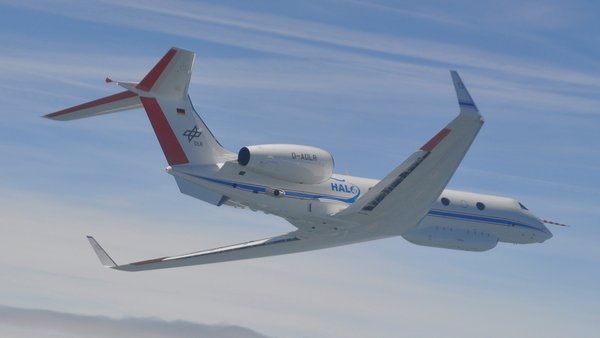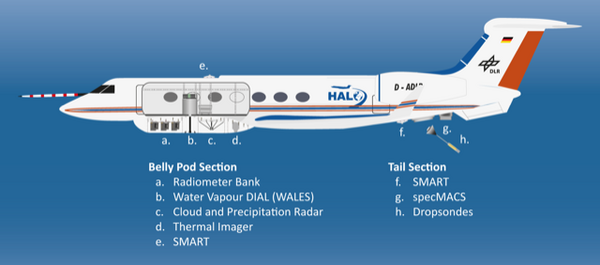HALO as a cloud observatory: the NARVAL expeditions
In June 2019 edition of the Bulletin of the American Meteorological Society, Prof Bjorn Stevens, director of the department “The Atmosphere in the Earth System” at the Max Planck Institute for Meteorology (MPI-M) and his co-authors describe a large effort, involving seven German institutions, among them a large contribution from German universities through support of the Deutsche Forschungsgemeinschaft (DFG), and international partners from France, Barbados and the United States of America, to configure HALO as a cloud observatory.
The effort involved the installation of a variety of remote sensing instrumentation, from advanced and spectrally resolved radiometers covering a wide range of the electromagnetic spectrum, to water vapor lidars, cloud radars and parachute borne radiosondes. This configuration of HALO, which has been developed over the last ten years and tested through the 2013 and 2016 NARVAL (Next-generation Aircraft Remote-Sensing for Validation Studies) expeditions provides a wholly new capacity to study cloud structure. Measurements during NARVAL demonstrate the ability of the dropsondes to measure the large-scale vertical motion of the atmosphere in which the remotely sensed clouds form, simultaneously with a characterization of cloud micro and macro structure. It also details some of the challenges and opportunities that such a vast array of remote sensing poses for sensing the clouds from different perspectives.
The capabilities of HALO as developed and demonstrated in the NARVAL expeditions are serving as a centerpiece of the long-anticipated EUREC4A field campaign, scheduled for early 2020. EUREC4A will involve five research aircraft, a similar number of research vessels, an array of autonomous sensors, and measurements from the Barbados Cloud Observatory. EUREC4A is shaping up to be the largest ever study of shallow clouds and their interaction with the atmospheric and oceanic environment; it is made possible in large part by techniques and instrumentation described in the new article by Stevens et al.
Original publication:
Stevens, B., et al. (2019) A high-altitude long-range aircraft configured as a cloud observatory – the NARVAL expeditions. Bull. AMS, 6, 1061-1077. doi: 10.1175/BAMS-D-18-0198.1
More information:
Contact:
Prof Dr Bjorn Stevens
Max Planck Institute for Meteorology
Phone: +49 (0)40 41173 422 (Assistant Angela Gruber)
E-Mail: angela.gruber@mpimet.mpg.de


